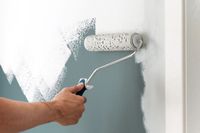
DIY Gutter Installation Tips and Considerations for Homeowners
Installing gutters is an essential task for protecting your home from water damage. Properly functioning gutters channel rainwater away from your roof, walls, and foundation, preventing issues such as erosion, mold, and basement flooding. While hiring a professional is always an option, DIY gutter installation can save you money and give you the satisfaction of completing a home improvement project on your own. Here are some essential tips and considerations for DIY gutter installation, including the option to pick up affordable materials from budget-friendly stores like Lidl or Aldi.
Choosing the Right Materials The first step in gutter installation is choosing the right materials. Gutters come in various materials, including aluminum, vinyl, steel, and copper. For most DIY projects, aluminum and vinyl are popular choices due to their affordability, ease of installation, and durability. Aluminum gutters are rust-resistant and come in various colors, while vinyl gutters are lightweight and easy to cut. Budget-friendly stores like Lidl and Aldi occasionally offer gutter installation kits, which can be a cost-effective option for homeowners. However, be aware that these kits may have limitations in terms of quality and longevity.
Planning and Measuring Accurate planning and measuring are crucial for a successful gutter installation. Begin by calculating the total length of gutters needed for your home. Measure the perimeter of your roofline, including any additional sections that require gutters, such as garages or porches. Next, determine the number and placement of downspouts, which are typically installed at each corner and every 20-30 feet along the gutter system. Proper planning ensures you purchase the right amount of materials and helps you avoid common installation mistakes.
Preparing for Installation Before installing gutters, gather all necessary tools and materials, including the gutters, downspouts, brackets, screws, sealant, a measuring tape, a level, a hacksaw, and a ladder. Ensure you have a stable and safe ladder to work from, as gutter installation often involves working at heights. Clear any debris from the roof and clean the fascia boards where the gutters will be attached. If the fascia boards are damaged or rotten, replace them before proceeding with the installation.
Installing the Gutters Start the installation process by marking the slope of the gutters. Gutters should have a slight downward slope toward the downspouts to ensure proper water flow. A slope of about 1/4 inch for every 10 feet of gutter is generally recommended. Use a level and chalk line to mark the slope on the fascia boards.
Attach gutter brackets to the fascia boards along the chalk line, spacing them about 2 feet apart for stability. Secure the gutters to the brackets, ensuring they follow the slope line. Connect the gutter sections using connectors or sealant, and secure end caps to the ends of the gutters. Cut the gutters to size using a hacksaw, and make sure the edges are smooth to prevent leaks.
Install the downspouts by attaching them to the gutters with elbow joints and brackets. Ensure the downspouts direct water away from your home's foundation. Use sealant on all joints and connections to prevent leaks.
Post-Installation Maintenance After installing the gutters, inspect the system for any leaks or misalignments. Run water through the gutters using a hose to ensure proper flow toward the downspouts and away from the foundation. Regularly clean your gutters to remove leaves, twigs, and other debris that can cause clogs. Consider installing gutter guards to reduce the frequency of cleaning and keep the gutters functioning efficiently.
DIY gutter installation can be a rewarding and cost-effective project that helps protect your home from water damage. While budget-friendly materials from stores like Lidl and Aldi can be a good starting point, be mindful of their potential limitations in quality. By choosing the right materials, planning accurately, preparing thoroughly, and following proper installation techniques, you can successfully install gutters that will safeguard your home. Regular maintenance will ensure your gutters remain in good working condition for years to come. With these tips, you'll be well-equipped to tackle gutter installation and enjoy the benefits of a well-protected home.



